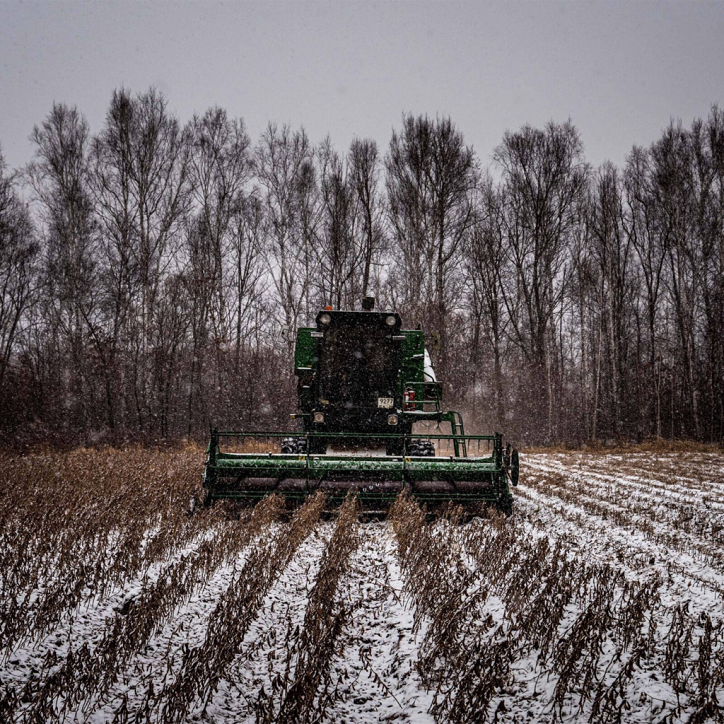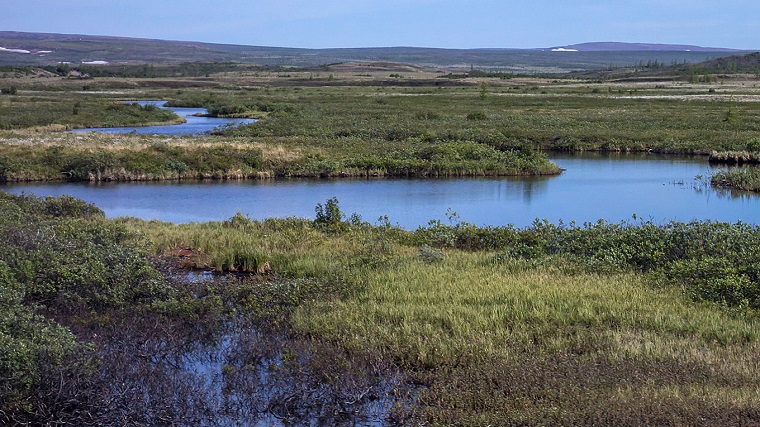Impact of climate change on farming and rural development for the Russian North
In Russia climate change is generally not perceived or discussed only as a risk. On the contrary it is expected to have a positive effect on Russia’s farming sector. International scientists have also found that while climate change threatens to stunt agricultural production in the west, this might be a different story in Russia, at least in the short term.
In very Northern latitudes, global warming could extend opportunities for crop growing seasons in areas that have so far not been cultivated. Rising temperatures will de-ice Russia’s permafrost areas, releasing large amounts of methane gas. As a result, this could add more than a thousand square kilometres of farmland especially in the Siberia region. It should be noted that yields would almost certainly be lower because of less fertile soil there in general. Also, global warming allows the cultivation of southern crops in the norther regions (i.e. Moscow, Kursk, Oryol, Tambov): apricots, walnuts, peaches, southern varieties of wheat etc. The planting zone for the heat-loving sunflower has also shifted northward: in recent years it has been grown in the Bryansk, Oryol, Ryazan regions, as well as in Mordovia, Tatarstan and Bashkortostan. Moreover, the growing season has extended: autumn frosts come later, which makes it possible to cultivate later varieties and hybrids of agricultural crops, such as corn and sunflower.
In December 2020, an article in ProPublica suggested that the frigid east of Russia could, with global warming, become a new global agricultural powerhouse.
A great transformation is underway in the eastern half of Russia. For centuries the vast majority of the land has been impossible to farm; only the southernmost stretches along the Chinese and Mongolian borders, including around Dimitrovo, have been temperate enough to offer workable soil. But as the climate has begun to warm, the land — and the prospect for cultivating it — has begun to improve.
ProPublica
Thanks to Russia’s vast, unexploited and warming Siberia region, the article declares: “No country may be better positioned to capitalize on climate change than Russia.”
The article quotes a scholarly estimate that permafrost melting will make 2 million square miles of Siberia available for farming by 2080. That’s nearly 1.3 billion acres. By comparison, according to the US Department of Agriculture, there are only 897 million acres being farmed in the United States.

A soybean field in Russia’s remote Far East that is farmed by a Chinese entrepreneur. As the planet continues to warm, vast new stretches of Russia will become suitable for agriculture.
It is against this regional variability in the impact of climate change, and the significance of massive hydrocarbon energy resources to the economy of the Russian Federation, that the Russian response to climate change must be considered.
Russia’s National Action Plan for Adaptation to Climate Change to 2022
On 4 January 2020, Russia published a national plan to adapt its economy and society to climate change. Russia has been slow to adopt the ambitious climate targets of the Paris agreement.
The National Action Plan for the First Phase of Adaptation to Climate Change for the Period up to 2022 was published online by the Russian government. The document outlines the measures to be taken by federal and regional authorities to “reduce the vulnerability of the population, economy and natural environment to the impacts of climate change.” Moreover, it defines a number of possible opportunities arising from climate change.
The national plan starts with a call of warning. The Federal Service for Hydrometeorology and Environmental Monitoring reports that the average annual temperature in Russia is rising 2.5 times faster than the global average.
These include increased risks to health, ecological disbalance, the spread of infectious diseases, and an increase in electricity consumption due to air conditioning. Russia will likely experience more intense and frequent droughts, precipitation, floods, fires, and the degradation of permafrost in the North.
However, the document also highlights the possible benefits of climate change. These are expected to include a reduction in energy consumption for heating, an expansion in crop and livestock production, and an increase in the productivity of boreal forests.
Regarding the Far North, “possible positive consequences of the expected climate changes for the Russian Federation include… improving the ice situation and consequently the conditions for the transportation of goods in the Arctic seas [and] facilitating access to the continental shelf of the Russian Federation in the Arctic Ocean.”
The first seven pages of the document outline the planning, implementation and evaluation of a climate change adaptation plan. The government pledges its support by offering scientific assistance and expects to take responsibility for the security of people impacted by the consequences of climate change. Russia only officially ratified the Paris agreement in October 2019. The new plan reiterates Russia’s obligation to the United Nations Framework Convention on Climate Change and other international treaties.
The following ten pages make up an appendix of the Russian government’s planned support processes to implement the national plan for climate change adaptation. In a list of 30 measures, the government delegates organizational, scientific and legal tasks to various ministries and bodies of the state. The steps are design to reduce Russia’s vulnerability to the threat of climate change.
These measures include upgrading the national climate monitoring system, preparing assessments of the impacts of climate change and developing adaptation strategies for specific sectors (such as the energy, transport and agriculture industries).
The Ministry of Education and Science is tasked with including educational material about climate change and adaptation in schools and professional education centers. The government also plans to calculate the risk of Russian goods becoming uncompetitive if they are unable to meet climate-related standards.
The Far North is separately addressed in measure 5. By the third quarter of 2021, the Ministry for the Development of the Russian Far East and Arctic, the Ministry of Economic Development and other Ministries are responsible for presenting a formulated system of operative measures for the adaptation to climate change in the Arctic.
“It is only the first institutional phase for the next few years, but it is the right path,” Dr. Alexey Kokorin, Head of the Climate and Energy Program at the WWF Arctic Program in Russia, told HNN.
Climate change in Russia
Russia, the world’s largest country, is particularly vulnerable to climate change. In July 2019, the government declared an emergency after raging wildfires engulfed an area in Siberia bigger than the size of Belgium. The fires evolved into a national problem. The warming atmosphere, soot and ashes from the fires accelerate the melting of the Arctic ice and permafrost. This in turn releases more greenhouse gases into the atmosphere. In the Russian Arctic, there is massive infrastructure built on permafrost.

Siberian tundra.
In July 2019, southeastern Siberia was hit by reportedly the worst flooding in a century. Heavy rainfall flooded several villages in the Irkutsk region, leaving at least 18 dead and 13 missing. President Putin visited the region and declared that climate change is manifested in the increasing number of natural disasters.
Local residents of Irkutsk complained that they had not been warned before the floods struck. The new national plan for climate change adaptation is intended to improve the country’s monitoring and forecasting network in anticipation of such natural disasters.
The fight against climate change essentially means reducing greenhouse gases. However, the extraction and sale of coal, oil and natural gas are central to Russia’s economy. Any real progress in climate policy would require an ambitious retransformation of the Russian economy.
The new national adaptation plan has progressive policies, like introducing climate change education in schools across the country. However, it is still not clear how much Russia is prepared to make the necessary adaptations to climate change at a potentially major cost to business.
Sources:
- High North News, 8 January 2020. ‘Russia Unveils Climate Change Adaptation Plan’. https://www.highnorthnews.com/en/russia-unveils-climate-change-adaptation-plan
- Arc2020, 9 October 2020. ‘Russia – Climate Crisis & Fields of Possibility’. https://www.arc2020.eu/russia-climate-crisis-fields-of-possibility/
- ProPublica, 16 December, 2020. .The Big Thaw: How Russia Could Dominate a Warming World’. https://www.propublica.org/article/the-big-thaw-how-russia-could-dominate-a-warming-world
